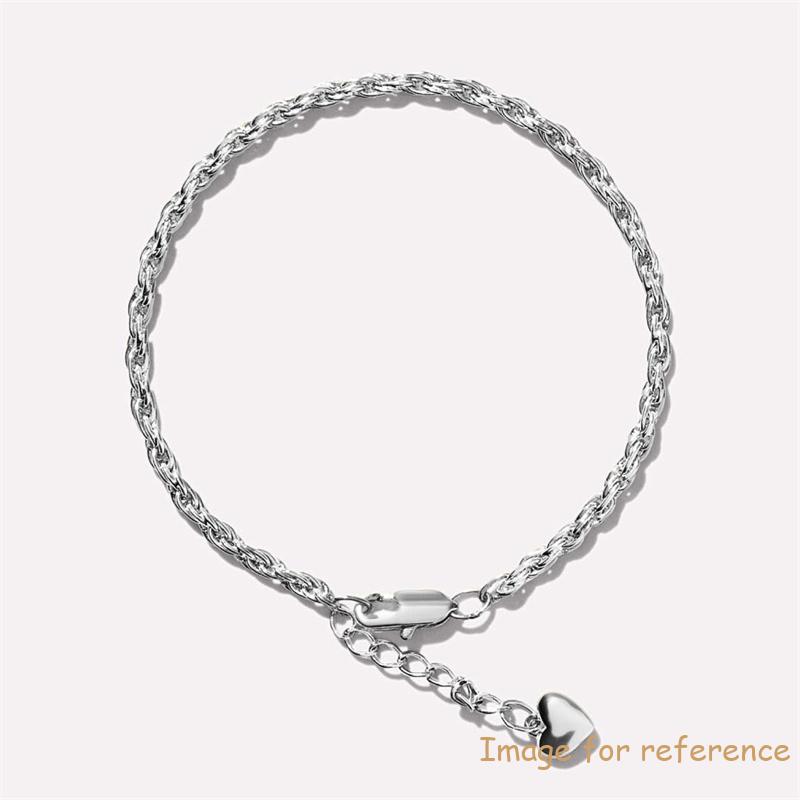Оценяване на разходите за производство 5,000 Гривни от стерлингово сребро с родиево покритие
Въведение
Бижутерската индустрия често включва масово производство на артикули, за да отговори на изискванията на пазара. Такъв пример е производството на 5,000 сребърни гривни с родиево покритие. Разбирането на последиците от разходите за такова мащабно производство е от решаващо значение както за бизнеса, така и за потребителите. Тази статия разглежда различните фактори, които влияят на разходите за производство на тези гривни, предоставяне на подробна разбивка, за да предложи цялостно разбиране.

1. Материални разходи
1.1 Стерлинг сребро
Стерлинг сребро, включващ 92.5% Чисто сребро, е основният материал, използван в производството на тези гривни. Цената на стерлинговото сребро варира в зависимост от пазарните цени, които се влияят от фактори като разходи за добив, пазарно търсене, и геополитически събития. По последни данни, цената на стерлинговото сребро е приблизително $0.80 на грам.
1.2 Родий
Родият е благороден метал, известен със своите отразяващи свойства и устойчивост на потъмняване. Често се използва за покритие на сребърни бижута, за да се подобри външния им вид и издръжливостта им. Цената на родиево покритие включва както разходите за материали, така и труда, включен в процеса на покритие. Покритието с родий обикновено струва между $3 да $5 на парче, в зависимост от дебелината на обшивката и сложността на дизайна.reddit.comreddit.comreddit.com+1reddit.com+1
1.3 Други материали
Допълнителните материали могат да включват скъпоценни камъни, закопчалки, и други декоративни елементи. Цената на тези материали варира в зависимост от качеството и спецификациите на дизайна. За простота, нека изчислим средната цена на $2 на гривна за тези допълнителни материали.
2. Разходи за труд
Разходите за труд обхващат заплатите, изплащани на работниците, участващи в различни етапи на производството, включително дизайн, кастинг, полиране, и покритие. Сложността на дизайна на гривната и необходимото ниво на майсторство могат значително да повлияят на разходите за труд. Средно, разходите за труд могат да варират от $5 да $10 на гривна.
3. Режийни разходи
Режийните разходи включват разходи, свързани с експлоатацията на производствената база, като комунални услуги, поддръжка на оборудването, и административни разходи. Тези разходи обикновено се разпределят между всички произведени единици. За мащабно производство, режийните разходи могат да бъдат оценени на $1 да $2 на гривна.
4. Опаковка и доставка
Опаковката гарантира, че гривните са защитени по време на транспортиране и се представят атрактивно на клиентите. Цената на опаковъчните материали и труда може да варира от $0.50 да $1 на гривна. Разходите за доставка зависят от дестинацията и обема, но могат да бъдат оценени на $1 да $2 на гривна за групови пратки.
5. Общи производствени разходи
Чрез сумиране на описаните по-горе разходи, можем да оценим общата производствена цена на гривна:
-
Стерлинг сребро: $0.80 на грам × 10 грамове = $8.00
-
Родий: $4.00
-
Други материали: $2.00
-
Труд: $7.00
-
Над главата: $1.50
-
Опаковка и доставка: $1.50
Обща цена на гривна: $24.00
За 5,000 гривни, общите производствени разходи биха били:
$24.00 × 5,000 = $120,000
6. Допълнителни съображения
6.1 Сложност на дизайна
Сложните дизайни може да изискват повече време и специализиран труд, увеличаване както на разходите за труд, така и на режийните разходи. Персонализираните дизайни също могат да доведат до по-високи първоначални разходи за настройка поради необходимостта от специализирани форми или инструменти.
6.2 Контрол на качеството
Прилагането на строги мерки за контрол на качеството гарантира, че всяка гривна отговаря на желаните стандарти. Въпреки че това може да увеличи разходите за труд, помага за намаляване на възвръщаемостта и повишаване на удовлетвореността на клиентите.
6.3 Големи отстъпки
Поръчването на материали на едро може да доведе до значителни икономии на разходи. Доставчиците често предлагат отстъпки за големи поръчки, което може да намали разходите за единица материал.
6.4 Пазарни условия
Колебанията в цените на среброто и родия могат да повлияят на производствените разходи. Важно е да наблюдавате пазарните тенденции и съответно да коригирате ценовите стратегии.
7. Заключение
Производство 5,000 сребърните гривни с родиево покритие включват различни компоненти на разходите, включително материали, труд, режийни, и опаковане. Чрез разбиране на тези фактори и отчитане на допълнителни съображения като сложност на дизайна и пазарни условия, производителите могат ефективно да оценяват разходите и да вземат информирани решения. От решаващо значение е да се поддържа баланс между ефективността на разходите и качеството на продукта, за да се гарантира успехът на производствения процес.
